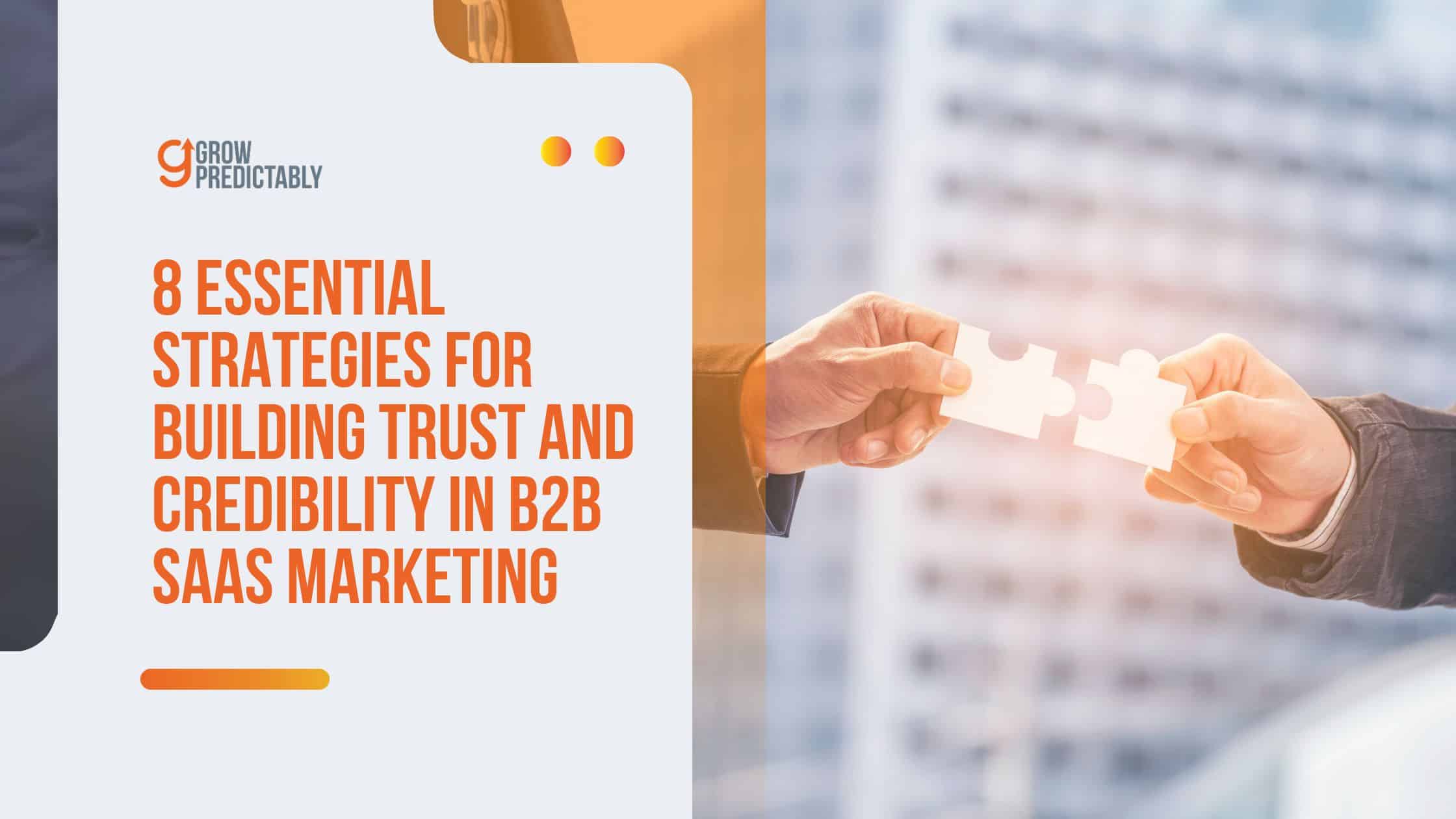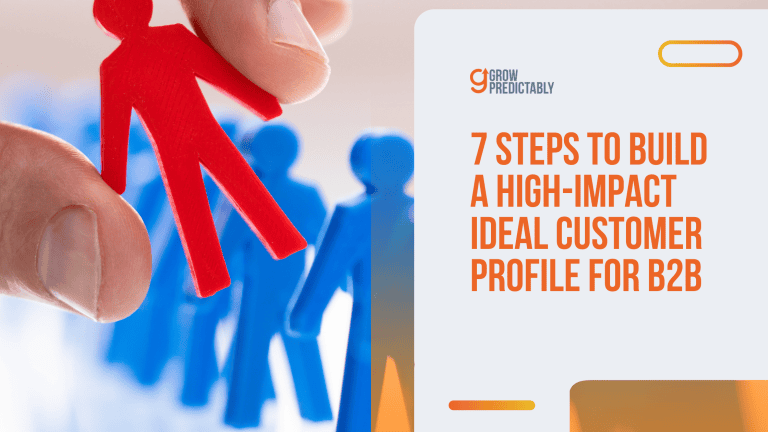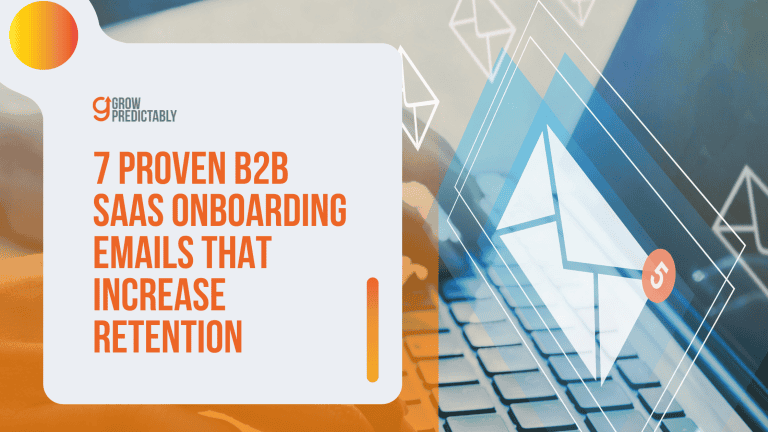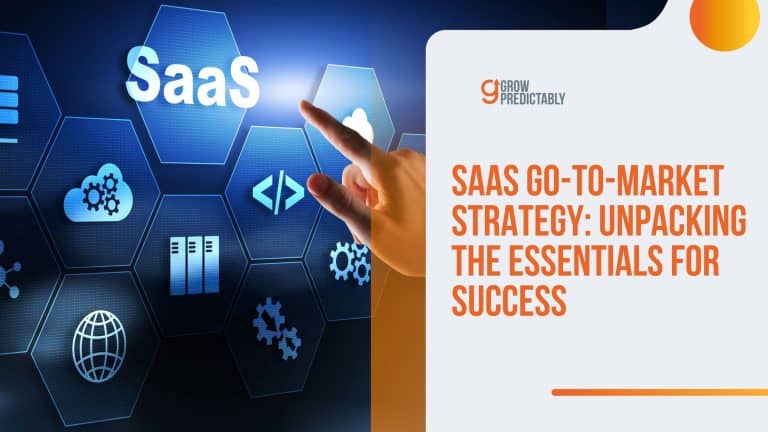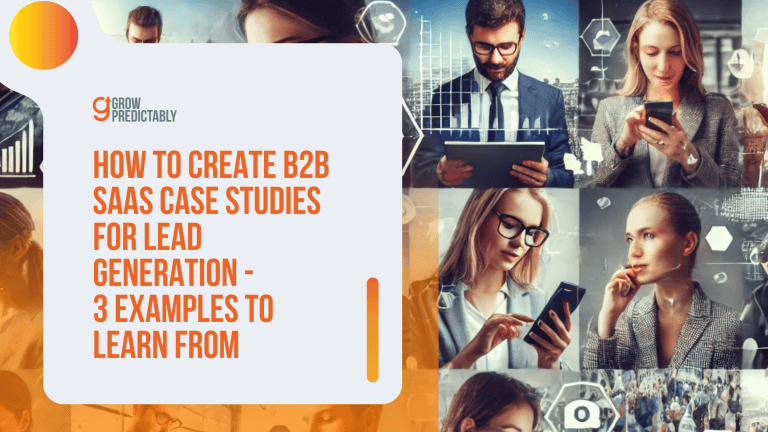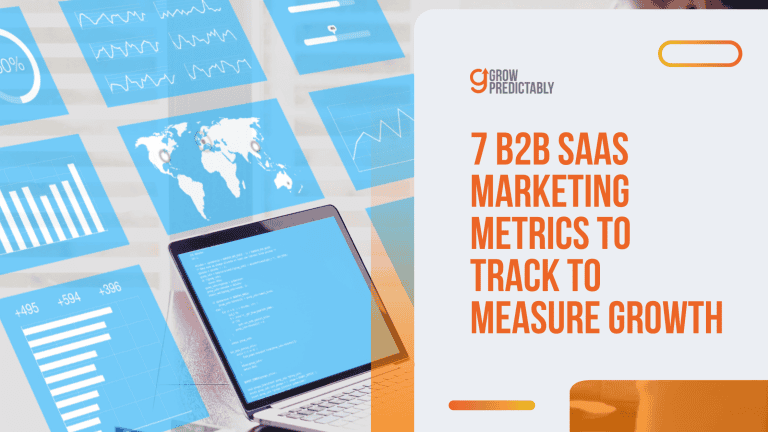8 Essential Strategies for Building Trust and Credibility in B2B SaaS Marketing
Here’s the thing about trust in B2B SaaS: You don’t get it by accident.
I’ve seen companies bleed revenue because they ignore one critical issue—buyers don’t believe them.
So, how do you change that?
You don’t need flashy ads or over-the-top promises; you need strategies that work in the real world.
This article breaks it down step by step. Ready to fix this once and for all?
Let’s go.
Building Trust and Credibility in B2B SaaS Marketing
Every failed enterprise software deal represents thousands in lost revenue, countless wasted hours, and missed opportunities on both sides.
But here’s what most people miss: in the competitive SaaS market, enterprises are not just buying features or capabilities.
They’re choosing a partner who’ll be deeply embedded in their operations, handling their sensitive data, and potentially affecting their entire customer experience.
What is B2B SaaS and Why Trust Matters
B2B SaaS, or Business-to-Business Software as a Service, refers to cloud-based software solutions designed to meet the specific needs of businesses.
These solutions are typically subscription-based, allowing companies to access software applications over the internet without the need for on-premise installation or maintenance.
B2B SaaS companies provide a wide range of software solutions, including customer relationship management (CRM), marketing automation, and project management tools, and it is crucial for a SaaS company to build trust and credibility with their clients.
By leveraging the power of the cloud, these companies can offer scalable, flexible, and cost-effective solutions that help businesses streamline their operations and drive growth.
What Trust Means in B2B SaaS
Enterprise trust goes far beyond basic reliability.
Your platform needs to perform flawlessly during its peak seasons – imagine an e-commerce platform crashing during Black Friday.
Their customer data must remain absolutely secure – one breach could destroy their reputation.
Your company needs to demonstrate long-term stability – they can’t risk their operations on a partner that might disappear.
Your support team must be ready 24/7 – because in enterprise software, every minute of downtime impacts your potential customers’ operations.
Most crucially, building trust means ensuring your product delivers exactly what you promised during those long sales cycles.
Ensuring satisfied customers through reliable performance and security is crucial for maintaining trust.
An organization’s ability to learn, and translate that learning into action rapidly, is the ultimate competitive advantage
Peter Senge
Challenges in Building Trust
Breaking through enterprise skepticism requires more than just a solid product – it requires establishing trust with potential customers.
Every stakeholder approaches new software purchases with heightened caution due to past implementation failures. Effective marketing efforts are essential to counteract past implementation failures and build trust.
The decision-makers who control enterprise software budgets have learned expensive lessons about vendor promises versus reality.
Their rigorous evaluation processes stem from direct experience with failed migrations, unused licenses, and scaling limitations.
These past challenges shape current purchasing behaviors, leading to increasingly thorough vendor assessments.
Factors Making Trust Building Hard

Generally, people don’t like to invest in any way in anything they can’t fully trust.
The same chemistry goes for brands and customer acquisition.
If you want your target audience to invest time and money in your B2B product, being a brand they can trust to bring solutions is non-negotiable.
Here’s how enterprise software sales face unique hurdles:
- Multiple decision-makers scrutinize every aspect – from technical architecture to financial stability
- Extended evaluation periods mean maintaining trust through countless touchpoints
- Complex technical requirements demand clear, consistent proof of capability
- High-stakes implementations require rock-solid reliability evidence
- Security concerns necessitate extensive verification and compliance proof
Alignment between sales and marketing teams is crucial to address the scrutinMost crucially, your product must deliver exactly what you promised during thy from multiple decision-makers.
Consequences of Trust Issues
Building trust requires consistent delivery on promises, transparent communication, and reliable support.
When trust breaks down, the impact cascades throughout your business.
Sales cycles stretch even longer. Customer acquisition costs soar as you fight harder to prove credibility.
Enterprise customers start eyeing the exit, and expansion revenue dries up.
Even worse, in the connected enterprise world, one major trust breach can poison your reputation across entire industries.
When you make building trust significant at every customer touchpoint, you prevent these costly losses.
Solutions to Trust Issues
Building enterprise-grade trust demands a systematic approach. Your security measures must be airtight and transparent.
Prioritizing customer retention through consistent platform reliability is crucial.
Your platform stability needs constant monitoring and improvement.
Your support team requires enterprise-level expertise and responsiveness.
Your product roadmap has to align perfectly with customer scaling needs.
Most importantly, you need to prove all of this consistently at every customer touchpoint.
8 Strategies to Build Trust and Credibility in B2B SaaS Marketing

Trust drives revenue, closes deals faster, and determines your market position.
Focusing on customer retention strategies also helps sustain trust and long-term growth for your B2B SaaS.
Let’s dive into five proven approaches that transform skeptical prospects into confident buyers.
1. Know Your Target Audience
Marketing in B2B SaaS isn’t about shooting in the dark – it’s about precision targeting based on a deep understanding of your target audiences.
According to McKinsey’s 2023 B2B Pulse Survey, 80% of B2B decision-makers have switched vendors at least once due to misaligned solutions.
Your success hinges on knowing exactly who your potential customers are, what keeps them up at night, and how your solutions address their needs.
Modern B2B buyers are sophisticated and informed and expect vendors to understand their business inside out.
They’re not just buying software – they’re investing in solutions that will impact their entire organization.
- Know Your Customer’s Needs and Pain Points: Dive deep into industry-specific challenges through voice-of-customer research. Track support tickets, analyze customer feedback, and monitor industry forums. Set up regular customer advisory boards to stay ahead of emerging needs. Remember – the problems they tell you about aren’t always their real problems.
- Create Buyer Personas for Effective Marketing: Build multi-dimensional profiles that go beyond basic demographics. Map out their tech stack, budget constraints, and internal politics. Document their career aspirations and what success looks like for them personally. Your personas should be living documents that evolve with market changes.
- Understand the Decision-Making Process: Map the entire buying committee’s dynamics. Know who influences, who decides, and who can veto. According to Forrester, the average B2B purchase now involves 27 interactions across multiple stakeholders and varying channels. Track these touchpoints and understand how decisions flow through their organization.
Your target audience analysis forms the foundation of every marketing decision you’ll make.
The companies that win in B2B SaaS are those that become extensions of their potential customers, aligning seamlessly with their goals and anticipating their needs before they arise.
This level of understanding doesn’t happen overnight – it requires consistent investment in research, analysis, and relationship building.
But when done right, it transforms your marketing from a megaphone into a magnet, attracting precisely the customers you’re best positioned to serve.
2. Building a Strong Brand Foundation
The B2B SaaS landscape is packed with competitors, all claiming to solve similar problems.
Breaking through requires more than just features – it demands a brand that resonates deeply with your target market.
For a SaaS company, establishing a strong brand foundation is essential to differentiate itself in a crowded market.
Brand building in B2B SaaS isn’t just about logos and color schemes – it’s about creating a distinct market position that makes your solution the obvious choice.
According to Edelman’s 2023 Trust Barometer, 81% of B2B decision-makers say brand trust is a deal-breaker in their purchasing decisions.
- Develop a Unique Value Proposition (UVP): Extract the core value only your solution delivers and support it with customer testimonials highlighting successful use cases. Map out your competitive landscape and identify gaps where you excel. Document specific use cases where your solution outperforms alternatives. Your UVP should speak directly to your target audience’s most pressing challenges and articulate why your approach is superior. Validate this through customer interviews and win/loss analysis.
- Establish a Consistent Brand Voice and Tone: Craft communication guidelines that reflect your market position. Define specific word choices, phrases to avoid, and how to address different audience segments. Your brand voice should maintain professionalism while showcasing your unique perspective on industry challenges. Create detailed documentation for your team that covers everything from email communications to social media posts.
- Create a Professional Visual Branding: Develop a comprehensive brand identity system that works across all digital touchpoints. Adobe’s State of B2B Branding Report shows that 82% of B2B buyers are more likely to purchase from brands with professionally designed marketing materials. Invest in high-quality design assets, maintain strict brand guidelines, and ensure every visual element reinforces your market position.
Your brand foundation acts as the north star for all marketing activities. It’s not just about looking professional – it’s about building a strategic asset that creates inherent value for your business.
Sharing success stories can significantly enhance your brand’s credibility and trustworthiness, more so when you leverage customer testimonials with it.
Strong B2B brands command premium pricing, attract better talent and reduce customer acquisition costs.
The key is maintaining unwavering consistency while continuously evolving your brand to meet market demands.
3. Create Content That Actually Helps People
The enterprise B2B SaaS landscape is drowning in shallow content while decision-makers are starving for substance.
HubSpot’s State of Marketing Report reveals that 88% of B2B enterprise buyers conduct independent research before contacting vendors, but 67% find most vendor content lacks actionable depth.
Participating in industry events can provide valuable insights and content ideas that resonate with your audience.
Breaking through the content noise requires more than just production – understanding different marketing channels and enterprise pain points is a prerequisite.
- Create Step-by-Step Technical Implementation Guides: Develop comprehensive deployment playbooks that address enterprise-specific requirements. Document integration patterns with common enterprise systems. Create troubleshooting guides that resolve complex technical scenarios. Build scalability frameworks that account for different organizational structures. Your technical content should empower implementation teams to succeed without constant vendor support.
- Develop Platform Comparison Frameworks: Build objective evaluation criteria based on enterprise requirements. Create detailed feature comparison matrices that go beyond marketing claims. Document real-world performance benchmarks in enterprise environments. Share migration guides that address the complexity of enterprise transitions. According to TrustRadius, 84% of buyers rely on detailed comparison content during their evaluation process.
- Build Comprehensive Security Documentation: Create detailed security whitepapers that address enterprise compliance requirements. Develop implementation guides for different security frameworks. Document incident response procedures and SLAs. Build risk assessment templates that help security teams evaluate your solution. Your security content should anticipate and answer every question enterprise security teams might raise from customer testimonials and other feedback.
4. Become Known for Something Specific
Market differentiation in B2B SaaS isn’t optional – it’s survival.
Salesforce’s State of the Connected Customer reveals that 76% of enterprise buyers prefer vendors who demonstrate specialized expertise in their industry challenges rather than generic solution providers.
Specialization drives premium pricing and market leadership.
- Develop Specialized Solutions: Create industry-vertical features that solve unique sector challenges. Build specialized modules that address specific regulatory requirements. Design custom workflows that mirror industry-specific processes. Implement domain-specific algorithms that outperform generic solutions. Your product development should reflect a deep understanding of industry nuances that generalists miss.
- Create Technical Authority Content: Produce in-depth technical documentation that showcases industry expertise. Develop industry reports based on aggregated customer data and strategically distribute it across diverse marketing channels. Build implementation frameworks specifically designed for your specialty area. Document advanced use cases that push the boundaries of what’s possible in your field. According to LinkedIn’s B2B Technology Marketing Report, 82% of enterprise buyers are more likely to engage with vendors who consistently demonstrate technical depth in their specialty.
- Build Comprehensive Industry Guides: Create detailed playbooks for industry-specific challenges. Leverage insights from industry reports to develop ROI models that capture unique industry value drivers. Document compliance frameworks for regulated sectors. Share migration guides tailored to industry-specific legacy systems. Your guides should become the go-to resource for your chosen specialty.
5. Demonstrate Industry Expertise
In B2B SaaS, surface-level knowledge isn’t enough.
Your entire market presence must reflect a deep understanding of the most relevant marketing channels, industry-specific challenges, trends, and transformation opportunities.
Decision-makers need confidence that you grasp both their technical requirements and business context.
True expertise emerges from direct industry engagement, not just market research.
Success demands immersing yourself in your customers’ world – understanding their regulatory pressures, competitive dynamics, and operational constraints.
Every piece of content, every product feature, every customer interaction should demonstrate this depth of understanding.
- Conduct Deep Industry Research: Build systematic processes for tracking industry evolution and emerging challenges using insights from the latest industry reports. Create detailed analysis of regulatory changes and their operational impact. Develop comprehensive mappings of industry-specific workflows and pain points. Monitor technological advances that could disrupt traditional approaches. Your research should uncover valuable insights that even industry veterans find relevant.
- Create Expert Collaboration Networks: Build partnerships with recognized industry authorities who validate your approach. Develop advisory boards that provide ongoing strategic guidance. Create knowledge-sharing platforms where experts can exchange and provide valuable insights. Foster communities where practitioners can discuss emerging challenges. Your network should connect you directly to the pulse of industry innovation.
- Develop Comprehensive Resources: Create detailed playbooks that address complex industry-specific scenarios. Build implementation guides that account for unique sector requirements. Design ROI models that capture industry-specific value drivers. Document best practices based on successful customer outcomes. Your resources should become essential reference materials for industry practitioners.
6. Show Real Results
In enterprise B2B SaaS, the days of flashy pitch decks filled with vague promises are over.
Decision-makers are inundated with software solutions promising transformation, but they’ve grown skeptical of marketing hyperbole.
They need concrete evidence that your platform can deliver meaningful impact at enterprise scale.
Real results, supported by customer testimonials, speak louder than marketing claims.
Technical evaluators, end users, and financial stakeholders each require different forms of proof, but they all share one common demand: show us exactly what your platform can do with real numbers and verifiable outcomes.
- Document Implementation Timelines: Create detailed deployment roadmaps showing every milestone from kickoff to full adoption. Break down the onboarding process into specific phases with clear deliverables. Track and share the exact steps satisfied customers took to achieve full implementation. Build comprehensive technical documentation that outlines configuration requirements, integration points, and potential challenges. Your implementation evidence should give prospects complete confidence in their path to success.
- Share Performance Metrics: Build before-and-after comparisons that capture real system performance improvements. Document exact response times, throughput capabilities, and resource utilization patterns. Measure and track specific workflow improvements across different user roles. Create detailed technical benchmarks that demonstrate platform capabilities under various load conditions. The metrics you share should paint a clear picture of tangible improvement in areas that matter most to enterprise operations.
- Demonstrate Business Impact: Track and document revenue impact across different customer segments and use cases. Break down operational cost reductions into specific categories with exact savings. Measure productivity gains through concrete metrics like time saved per process or resources reallocated. Build comprehensive ROI models based on actual customer experiences rather than theoretical projections. Your business impact evidence should connect technical capabilities directly to bottom-line results.
7. Talk Like a Human Being
Enterprise software doesn’t have to sound like it was written by robots.
Behind every enterprise purchase decision sits a human being trying to solve real problems.
When you strip away the buzzwords and corporate jargon, what remains is a conversation between people about solving business challenges.
Clear communication builds trust in enterprise relationships.
Technical buyers, department heads, and C-suite executives all share the same need: straight talk about what your platform can and cannot do.
They’re not looking for perfect – they’re looking for honest partners who can help them succeed.
- Address Platform Limitations: Be upfront about what your solution doesn’t handle well. Explain which integrations require custom work versus out-of-the-box deployment. Clarify performance expectations under different load conditions. Outline specific scenarios where alternative approaches might work better. Your honesty about limitations often builds more credibility than overselling capabilities.
- Communicate Product Updates: Break down new features in terms of actual user benefits rather than technical specifications. Explain exactly how updates improve existing workflows. Share the reasoning behind major platform changes. Provide clear timelines for deprecating old features and migrating to new ones. Your update communications should help users understand not just what changed, but why it matters to them.
- Respond to Technical Questions: Provide clear, direct answers without hiding behind technical jargon. Explain complex concepts through practical examples and real-world scenarios. Break down technical solutions into step-by-step guidance. Share workarounds and alternative approaches when standard solutions don’t fit. Your technical communication should empower users to solve problems, not just understand them.
8. Build Enterprise-Grade Support Infrastructure
Enterprise software support transcends basic help desk functions – it’s the backbone of lasting customer relationships.
When mission-critical operations depend on your platform, every minute of downtime or unresolved issues directly impacts your customers’ business performance.
The best enterprise support systems prevent problems before they occur.
When your platform powers core business operations, reactive support isn’t enough.
Your entire support infrastructure must be built around anticipating challenges, providing immediate resolution paths, and maintaining constant communication with technical teams.
- Establish Response Time Guarantees: Build tiered support levels that match enterprise operational requirements. Create dedicated emergency response teams for critical system issues. Develop automated alerts that instantly notify relevant technical experts. Map out resolution workflows for different types of enterprise challenges. Your SLAs should reflect real business impact, not just technical severity levels.
- Create Technical Documentation: Build searchable knowledge bases that capture solution patterns for known issues. Develop troubleshooting guides that empower customer technical teams. Create configuration guides that address different enterprise architectures. Document integration patterns with common enterprise systems. Your technical resources should help customers solve problems independently while knowing expert help is available when needed.
- Build Enterprise Support Channels: Create dedicated support paths for enterprise customers that bypass general queues. Assign technical account managers who understand specific customer environments. Establish direct communication channels between customer technical teams and your platform experts. Design support processes that align with enterprise change management requirements. Your support structure should reflect the critical nature of enterprise operations.
Tools and Resources for Trust Building
In B2B SaaS, the right tools amplify your trust-building efforts across every customer touchpoint.
Let’s break down the essential platforms that deliver measurable impact on buyer confidence.
Research and Intelligence Platforms
Strategic trust building starts with deep market understanding.
These tools serve as your foundation for understanding and engaging with your market.

Ahref’s ‘Site Explorer’ is just one example of this.
Aside from Ahref’s there are plenty options that could best suit different types of users.
- Ahrefs ($99/mo) – Uncover high-performing content topics and competitor analysis
- SEMrush ($119/mo) – Track competitor content performance and conduct content audits
- Hotjar ($99/mo) – Analyze user behavior through heatmaps and session recordings
- Survicate ($89/mo) – Gather targeted customer feedback through strategic user surveys
- Mention ($99/mo) – Monitor brand mentions and industry conversations
Trust Signal Management
Modern B2B buyers evaluate your credibility across multiple channels.
These platforms help establish and maintain your market credibility.
- Trustpilot (Free – $199/mo) – Collect and showcase verified customer reviews
- G2 ($600/mo) – Build credibility through verified B2B software reviews
- Social proof integration tools
- Security certification dashboards
- Customer success metrics platforms
Communication Infrastructure
Enterprise communication demands sophisticated tools that scale across organizations.

When it comes to live chat, Intercom is one of the best names to recommend on the market—it’s universally accessible cost-wise.
But if you want an established arsenal to address customer communications, live chat isn’t the only feature you’ll need.
Check out these other household brands, too.
- Intercom ($74/mo) – Unified platform for chat, email, and help center
- Customer.io ($150/mo) – Behavior-based email automation
- Hootsuite ($99/mo) – Comprehensive social media management
- Knowledge base platforms
- Technical documentation systems
Analytics and Optimization
Track and improve your trust-building efforts with dedicated measurement tools.
- Hotjar – Analyze user interaction with your content
- G2 Analytics – Track competitive positioning
- Mention – Monitor brand sentiment
- Customer.io – Measure engagement metrics
- Survicate – Gather systematic user feedback
Integration Best Practices
Connect your trust-building tools into cohesive workflows and leverage marketing channels to amplify their visibility.
- Link Trustpilot reviews with email automation
- Connect G2 reviews to social media through Hootsuite
- Use Hotjar insights to guide content strategy in Ahrefs
- Set up Mention alerts for quick response through Intercom
- Integrate customer feedback across all platforms
Remember: Start with essential tools that address your immediate needs:
- One content research tool (Ahrefs or SEMrush)
- One review platform (Trustpilot or G2)
- One communication tool (Intercom or Customer.io)
Add complexity only as your processes mature and need to grow.
Tools enhance your trust-building strategy – they don’t create it.
FAQs
Ready to Build Trust That Drives Revenue?
Throughout this guide, we’ve broken down the core elements of B2B SaaS trust.
The companies that dominate their markets aren’t just building features – they’re building deep trust with enterprise buyers.
Everything we’ve covered comes down to one crucial truth: in B2B SaaS, trust directly impacts your bottom line.
It shortens sales cycles, reduces customer acquisition costs, and drives expansion revenue.
More importantly, it transforms one-time buyers into long-term partners who champion your platform.
Your next step?
Pick one area where you can start building deeper trust today.
Whether it’s improving your technical documentation, enhancing your support processes, or creating more valuable content – start small, but start now.
Because in B2B SaaS, being trusted isn’t just about feeling good – it’s about driving real revenue growth.

